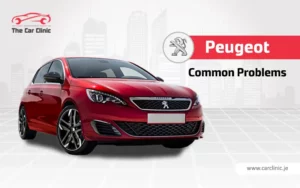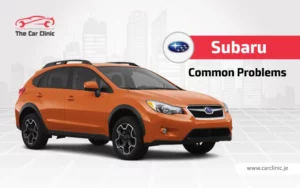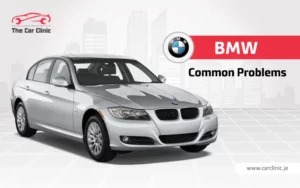Checking
and Replacing Your Brakes
Book your free brake check online today!
Your free brake check includes a digital measurement of how worn your brake pads, shoes, brake discs, and brake drums are – compared to the manufacturer’s guidelines. The goal is to give you the best advice possible to help you get your brakes working as well as when the manufacturer first installed them.
Our trained brake technicians do our free brake check, which takes about 45 minutes to an hour to finish. The test results are written on a brake report, which you can take with you, along with a quote for any work that needs to be done.
What components does the brake inspection cover?
Our thorough brake check starts with a preliminary road test to check the braking system. After that, we check many key areas, including the:
- Brake Pedal: During a static test, we will check how far the pedal moves and how well the servo works.
- Pads and shoes: We'll check for damage and see how worn the pads or shoes are.
- Wheel Cylinder: We'll look for damage or fluid leaks in the cylinder assembly and master cylinder.
- Disc Brake Calipers: We'll check each brake unit's callers, hoses, and pipes for damage or fluid leaks.
- Precision Inspection: We'll measure the wear on the discs or drums and report any damage we find.
- Handbrake: We'll report on how the handbrake looks and works.
- Brake Fluid: We'll check the brake fluid's quality to ensure it still works well and hasn't soaked up too much water.
- The final road test is to make sure that the brakes work perfectly.
At Car Clinic, we keep a wide range of high-quality brakes for cars and light commercial vehicles in stock, so if your brakes need fixing, you’re never too far from a solution. We know it’s important to keep your brakes working at their best, so why not schedule a free brake check today?
Guarantee
We offer a unique guarantee to ensure your brakes will always work well. You won’t have to pay anything to replace worn-out shoes or pads at Car Clinic within the first year of fitting as long as you own your original car.
If you’re worried about how well your brakes are working or would like to have them checked out before a long trip, please make an appointment at Car Clinic and one of our expert brake technicians will give your brakes a free, no-obligation inspection.
After we check your brakes, we’ll give you a written report and a quote for any work that needs to be done.
Do I need a brake inspection?
When you use your brakes, there are many signs to look out for that things may be amiss.
Grinding – When brake pads’ friction material is worn, the brake pad can wear down to the metal caliper and make a grinding sound. This will probably also damage the brake disc.
Squeaking – Many things can cause brakes to squeal, which could mean the brake caliper is stuck, and only part of the pad touches the disc. You should get this checked out.
Pulsating – If you apply the brakes and feel a steady pulsing from the brake pedal, the brake disc has become warped from too much heat. Pulsating happens when the brake disc is warped and no longer gives the brake pad a perfectly flat surface to touch. If this only happens when you hit the brakes hard, it could just be the ABS kicking in, but if it happens often or makes you nervous, you should have it checked ou
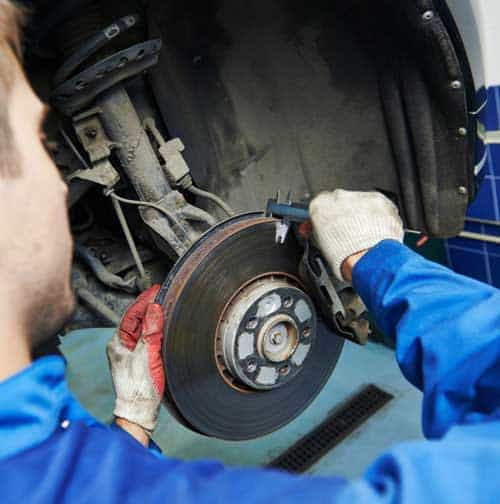
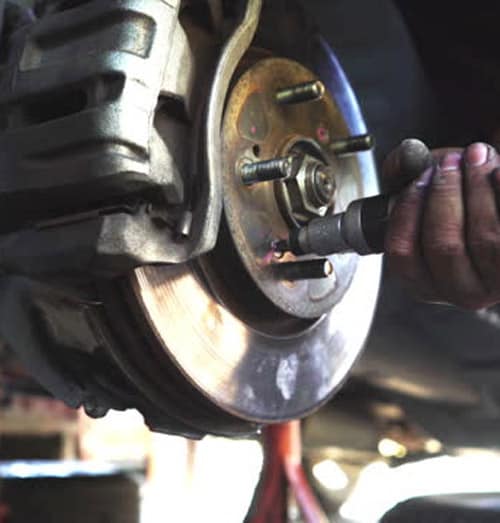
Pulling – When you hit the brakes, if your car pulls to the left or right, it’s usually because a mechanical or hydraulic part is stuck, like a seized caliper. An inspection can determine exactly why the car pulls to one side.
Sponginess – The brake pedal feels soft, and the brakes don’t seem to work. This means that air has gotten into the brake lines, making it hard for the brake fluid to move through the system.
Soft Brake Pedal – When the brake pedal is loose and goes all the way to the floor, there is a serious problem with the braking system that must be fixed immediately. When the brake pedal is soft and can be pushed to the floor, it’s usually because the brake fluid is bad and needs to be changed. However, other possible causes exist, such as a problem with the master cylinder.
Dashboard Light – If your brake warning light stays on or comes on when you use the brakes, usually, it means that the brake fluid level is too low. This could also mean that the brake hoses leak.
High Handbrake – If the handbrake pulls up more than usual, it may need to be adjusted, and this is usually more than 6 to 8 clicks in a modern car.
Old Brake Fluid – If the brake fluid in your vehicle is older than two years, it may not work as well because it is hygroscopic, which means it absorbs moisture over time, which changes the fluid’s properties, which makes it harder to stop. About every two years, you should change your brake fluid, but check your owner’s manual to be sure.
For your safety, it’s important to check your car out as soon as you notice any of the above problems.
Your brake check at Car Clinic
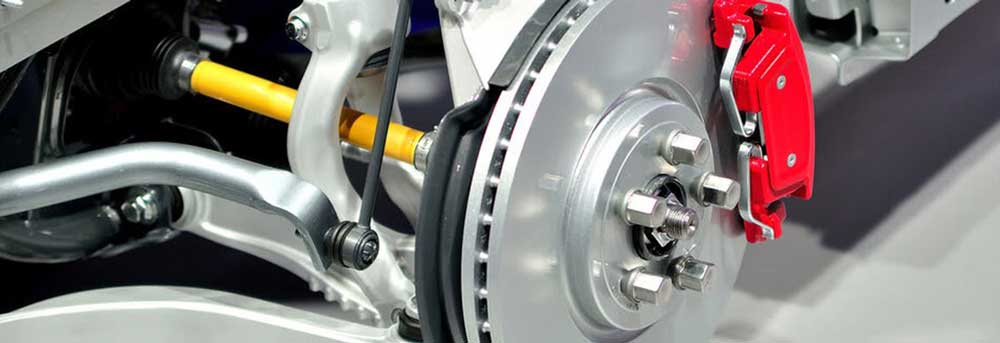
Checking the brakes regularly is an important part of any plan to keep a car in good shape. Brake checks can and do find problems before they affect how well your brakes work, and this offers you a chance to address the issue and restore the functionality of your car’s braking system. To ensure continuous good performance, the staff at Car Clinic know how crucial it is to regularly get your brakes examined and maintained.
When to replace your brakes
How often you need to get your brakes fixed depends greatly on how you drive.
For example, a set of brake pads on a car mostly driven on the motorway could last up to 60,000 miles or more. But the brakes on the same car mostly driven in the town center may only last 25,000 miles or less if it is driven a lot in the same type of location.
Most of the time, the front brakes wear out before the back ones because they do more of the stopping work, especially on cars with front-wheel drive.
People often say that brake pads should be changed when the friction material has worn down to 3 millimeters thick. Replace the brake discs after measuring their thickness if they are at or below the safe minimum thickness set by the manufacturer.
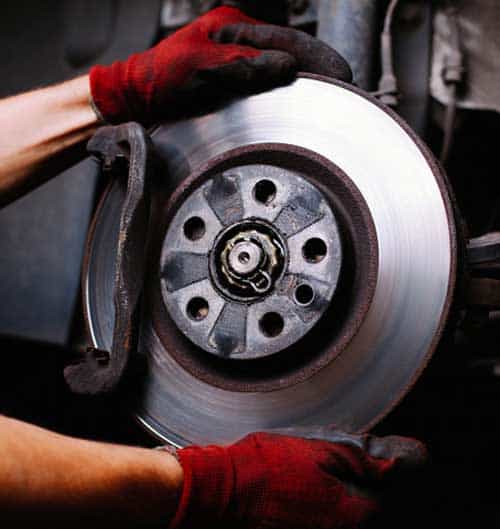
Did you know?
Car Clinic suggest that your axle sets may need the brake discs or drums changed. If you only replace one brake disc or drum, the brakes might not work as well, which can accelerate their wear.
When new parts are put in, it’s important to drive slowly and carefully for about 200 miles to let them settle in. Too much braking action on new parts could damage them and cause the brakes to work less well and less efficiently.
Car Clinic advises that if you drive an average or high amount each year (around 8,000 miles or more), your car’s braking system should be checked at least twice a year. Before a lengthy journey, you might also wish to check your brakes.
Guarantee
Also, we will guarantee all new brake parts for the first year or 12,000 miles after they are installed (whichever comes first), on your original vehicle.
Brake fluid change
Over time, the brake fluid in your car absorbs water, which can cause the brakes to fail. Manufacturers say that you should change your brake fluid every two years so that your brakes work as well as possible. At Car Clinic, we offer a service to change the brake fluid. This involves flushing out the old, diluted brake fluid and adding brand-new brake fluid. Book an appointment online to get your brake fluid changed.
What's included in a brake fluid change?
Our skilled brake specialists will use a pressure bleeder when changing the brake fluid. This tool pumps a steady new fluid flow under pressure into the brake fluid reservoir. This keeps air from getting into the hydraulic system. Starting with the brake that needs the most work (the one with the most dirt), the old fluid is bled out at the bleed nipple on each brake until clean fluid shows up in the bleed bottle. This process is completed in a certain order depending on how the braking system is set up. The old liquid is pushed out by the new fluid and dumped afterwards.
On most modern cars, you also need a diagnostic tool to turn on the bleed function on the ABS controller. This ensures that all the old fluid is flushed out of the ABS pump’s different channels and valves. At Car Clinic, we use DOT4+ fluid that has been made to meet the needs of modern electronic stability control systems.
A free thorough brake inspection is included when you schedule your brake fluid change online. This includes inspecting your key brake parts to ensure they are working well.
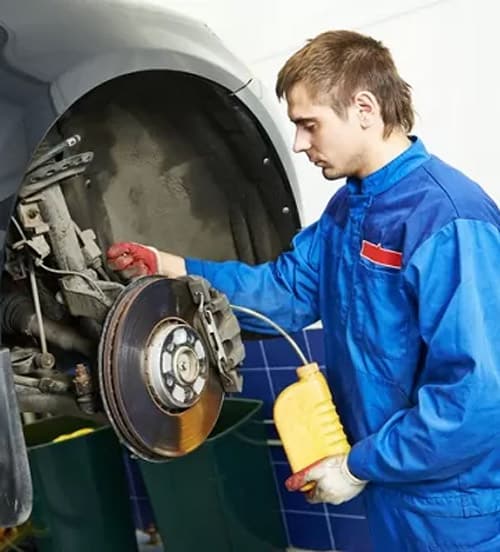
How much does brake fluid change cost?
It costs just £75 to change the brake fluid. We charge the same price to change the brake fluid in a supermini, a family car, or a large off-road 4×4 of any size. Including our no-cost thorough brake inspection, the whole process shouldn’t take more than an hour.
Brake fluid and vehicle servicing
Did you know that most car services don’t include changing the brake fluid? That’s why it’s important to ensure your brake fluid is in good shape and gets replaced regularly to keep your brakes from giving out. At Car Clinic, we check your brake fluid as part of our interim service and full-service packages to ensure it has a good boiling point and is in good shape overall. Also, if your car needs new brake fluid, you can ask us to change it during your service.
Why is brake fluid important?
Because it transmits the force generated when you depress the brake pedal to the wheel hub, brake fluid is a crucial component of your braking system.
When you brake, heat is produced, especially when you brake hard or for a long time. This heat may impact the brake fluid since it only functions when it is liquid and not too heated to become vapor. So because of that, the boiling point of your brake fluid is an important factor as to how well your brakes work because temperatures above the boiling point cause vapour bubble to form in the system, which could lead to brake failure.
Also, the brake fluid keeps all the moving parts from rusting and keeps them from sticking. It has to work well with rubber seals and hoses so that braking systems will last for the long haul and work at their best.
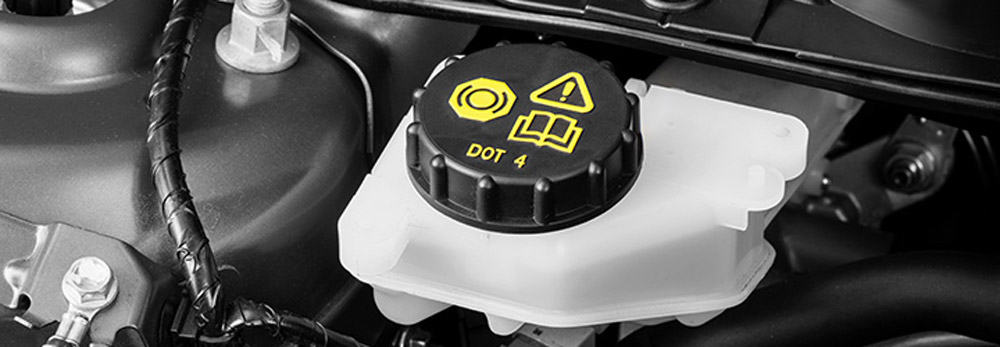
How often should you change brake fluid?
Different manufacturers recommend different times to change the brake fluid, but generally, this should be done at least every two years. Check your car’s manual for specific information about how to drive your make and model car. Changing your brake fluid on the recommended schedule helps keep your brakes from failing since brake fluid can lose its quality over time. Remember that brake fluid is checked during interim and full services to ensure it is in good shape and that its boiling point is right. However, it is not changed as part of the service.
Why does brake fluid deteriorate?
Brake fluid is hygroscopic, which means it can absorb moisture through the pipes, hoses, and joints it lubricates. As the amount of water in the brake fluid increases, the temperature at which the liquid boils goes down. The boiling point can be significantly lowered by water contamination, making it harder for you to stop.
Regular maintenance of your car will include checking the boiling point of your brake fluid. However, automakers advise changing your brake fluid at least every two years, if not sooner (check your vehicle handbook for details). Changing the brake fluid when it’s recommended keeps the brakes from failing and keeps the boiling point at a safe level.
The table below demonstrates how the boiling temperature of DOT 4 ESP Brake Fluid can be much lower when it is “wet” (contaminated with water) than when it is “dry” (i.e., no water content like when the brake fluid is brand new)
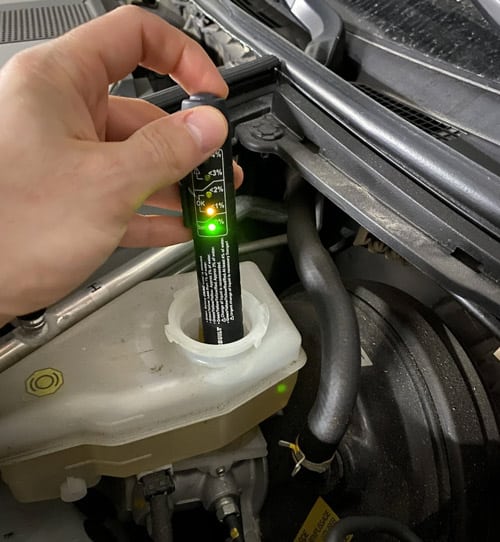
|
Dry boiling point (°C)
|
Wet boiling point (°C)
|
||
|---|---|---|---|
|
DOT 4 Standard
|
DOT 4 ESP Brake Fluid
|
DOT 4 Standard
|
DOT 4 ESP Brake Fluid
|
|
230
|
266
|
151
|
171
|
How car brakes work...
Today’s brake systems are composed of several components that work together to enable you to stop and safely turn your car.
The master cylinder, servo, brake callipers, brake fluid, brake cylinders, discs, drums, pads, and shoes make up your car’s brake system, and all the components are connected by a network of brake hoses and pipes.
The master cylinder, housed in the engine compartment, is connected to the brake pedal, and brake fluid is housed in the cylinder. The master cylinder develops hydraulic pressure when you depress the brake pedal.
Then, brake fluid is forced through a network of brake pipes and hoses to pistons in each wheel hub assembly that are hydraulically activated. Your car will stop when these pistons force the friction material from your brake shoes or pads onto moving components.
Drum brakes and disc brake assemblies are the two most popular types of brake assemblies. Additionally, ABS is a standard feature on the majority of contemporary vehicles.
Disc Brakes
Brake callipers, discs, and pads make up a disc brake system. The brake pad’s friction material is pressed against the surface of the brake disc as the brake pedal is depressed by hydraulic fluid under pressure.
The friction that results from this contact causes the vehicle to slow down or come to a stop.
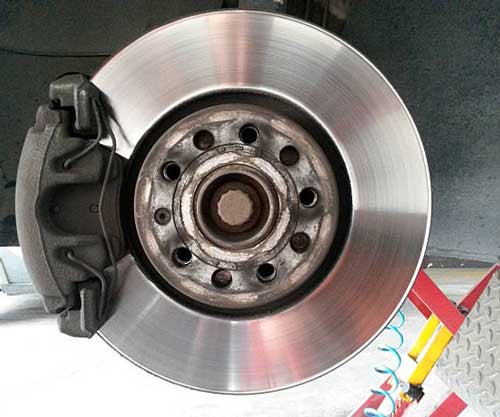
Drum Brakes
Brake drums, in conjunction with brake shoes and hydraulic wheel cylinders, make up the components of drum brake systems.
When the brake pedal is pressed, hydraulic wheel cylinders cause two curved brake shoes that contain friction material to be pressed against the interior of a rotating brake drum. This contact generates friction, which either slows down – or stops – the vehicle.
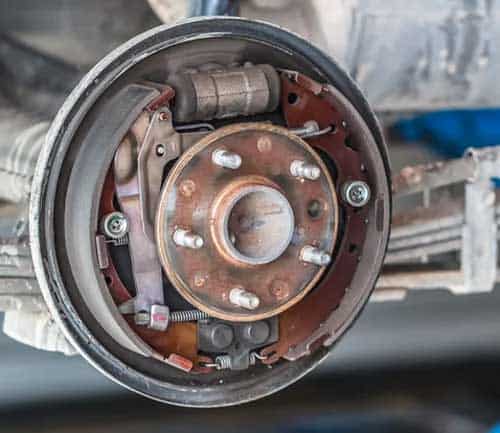
ABS and Parking Brakes
When a wheel decelerates too quickly, anti-lock braking systems (ABS) limit and release pressure on that wheel, this enables the application of the maximum amount of stopping power without risking brake lockup and skidding.
The ABS performs a self-test each time, and the standard braking system is activated if a defect is found. The warning light will alert the driver to a system flaw.
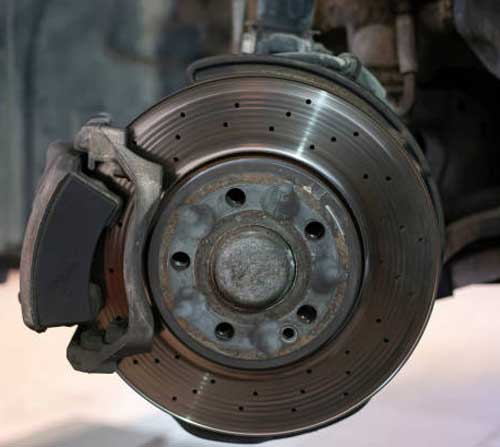
A lever system known as the parking brake or hand brake is used to keep a car in a parked position. The vehicle’s braking system’s rear braking components are activated.
When driving in a town, brakes are used more frequently than when travelling by motorway, and in an emergency, brakes may be required to stop your car quickly. For this reason, every driver should prioritise the upkeep of their braking system.





